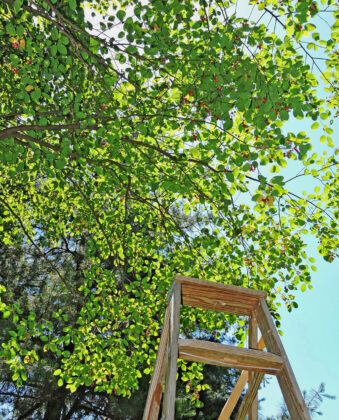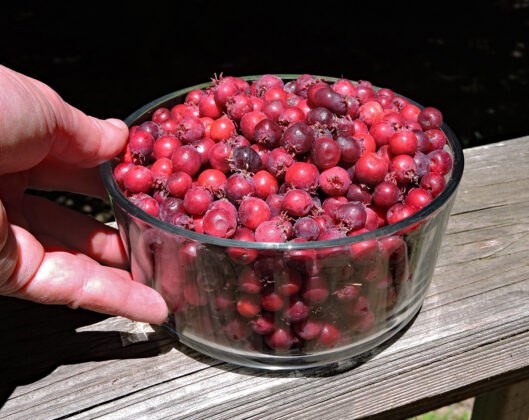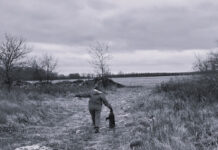
Look out across the landscape right now and you will see splashes of white dotting the edges of the woodlands as one of our earliest blooming native tree species displays its delicate blossoms. Known by its genus name Amalanchier, the serviceberry is a small deciduous tree or shrub that can be found throughout the U.S. in a variety of species. Also known as juneberry, saskatoon, sugarplum and shadbush (to name a few) the tree is a member of the rose family.
Earning its name

Being an early settler in this country was never easy, and many people passed away during the severe winter months. Unfortunately, burial during this time had to be postponed until the ground thawed. The blooming of the Amalanchier was a sure signal that the soil had softened and that clergymen could make their way to the different settlements in order to perform burial services. During this time, the tree was often the only thing in bloom and its blossoms often adorned the many fresh graves, earning it the name serviceberry.
In bloom, in service

The dainty flowers are fleeting, lasting merely a week, yet they provide a source of much needed pollen and nectar to early emerging insects such as bees and butterflies. The red admiral butterfly, a species which migrates northward each spring, is having an explosive year in 2024, and many individuals can be seen taking advantage of the early bloom, sipping nectar from the blossoms.
Once pollinated, the flowers give way to fruit which matures in June, giving rise to the name of juneberry. These waxy berries hang in clusters, ripening at different times and appearing in various shades of reds, blues and purples. What many don’t realize, is that they are edible. In her essay, “The Serviceberry: Economy of Abundance”, author Robin Wall Kimmerer describes the berries, “Imagine a fruit that tastes like a blueberry crossed with the satisfying heft of an apple, a touch of rosewater and a minuscule crunch of almond flavored seeds. They taste like nothing a grocery store has to offer: wild, complex with a chemistry that your body recognizes as the real food it’s been waiting for.”

A bounty of berries
When we built our house and started planning our native landscaping, a serviceberry was one of the first things we planted right outside the window. This was one of the most rewarding decisions we have ever made, for the birds that are attracted to the fruit at ripening put on a show like no other. Cedar waxwings, bluebirds, robins, cardinals, grey catbirds and blue jays, to name a few, aggressively vie for the nutritious feast, so important during nesting season. In just a matter of a few days, all the berries are gone, leaving the shrub devoid of fruit.
I love walking past our tree during this time and popping ripened berries into my mouth as I go about my work. I never take too many, as the tree was intended to provide this bounty for wildlife. Yet every few years, it outproduces itself and the birds cannot keep up with the ripening fruit which begins to cover the ground. It is during these periods of overproduction that I indulge myself. Getting out a ladder, I climb up into the branches, harvesting berries that are on the verge of ripening until I have about a quart. I love to use them in muffins and cobblers. They also store well in the freezer which allows me to hoard a supply until a future year when the tree decides to outdo itself again.
Autumn color. Once the berries are gone, the tree is still not done, however. Come autumn, it puts on a grand finale as its leaves turn a fiery orange, producing a glow which turns the heads of all that bask in its presence. Suffice it to say, the serviceberry is truly a giving tree!















Fascinating annual development of this species of fruited tree. Are these serviceberries trees currently in the 1 week of whitish blossoms in Geauga County? I was just curious if you recommend any of the Geauga County parks for viewing serviceberries in late April?
I would like to know if all the white blooming trees I see right now, everywhere, are Bradford Pears or Serviceberries?
I am leaning towards the Bradford as I have never noticed so many before. I know they are not native and are invasive. Driving on Route 6 from Rome into Chardon is alarming.
I wish they all were Serviceberry but sadly I think they are not.